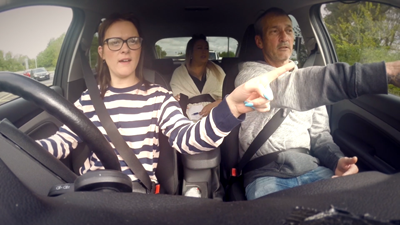
Buying a new car is exciting. Car dealers treat you like royalty, you get to choose colours and equipment levels and you get that unique new car smell. So it’s easy to get caught up in the moment and make some decisions that might lose their lustre over the following weeks and months.
1. Consider long term value
Before you give into temptation of buying new, do at least consider whether a used car might be a better option. After all, brand new cars very quickly decrease in value.
The average new car will have lost around 40% of its value just one year after driving off the forecourt, according to the AA.
Cars depreciate in value at different rates. What Car’s lists of the slowest and fastest depreciating cars are a useful place to start if you’re concerned about depreciation.
2. Check it fits your life
Racing red, sleek black, or perhaps a vibrant yellow? Hang on a minute. Before you get to deciding things like colour, take some time to consider whether your chosen car is right for you and fits your lifestyle.
Is it big enough? Crucially, will it fit in your garage, on your drive or in that tight space at the end of your road that you always end up in? If you have small kids, can you fit pushchairs and everything else in the boot? If so, do you still have space for luggage or whatever you might need for family trips away? The same goes for a pet dog. And will you just be using it for the supermarket run, or longer journeys?
Citroen suggests that car buyers make a list. That way you can prioritise what you really need against your budget. Start with a column of everything you definitely need, and then add a second column of added extras that would be good to have, if they fit in your budget.
3. If you’re going to upgrade one extra feature, make it AEB
AEB, or autonomous emergency braking, monitors the traffic conditions ahead and automatically brakes the car if the driver fails to respond to an emergency situation.
Cars with this system have a 38% reduction in real-world rear-end crashes, according to Thatcham Research, which wants it to be mandatory in new cars like seat belts are.
The system doesn’t often come as standard in many cars, but is well worth adding.
4. Consider the best way to pay
The range of payment options for cars can be bamboozling. So before you step on a forecourt and speak to a salesperson, take the time to understand the differences between the options available, which would best suit you, and which are best avoiding.
See our guide on the most common payment options available to car shoppers.
5. Stick to your guns on price
When you’ve decided exactly what car you want, be sure to research it as much as possible.
This includes finding the lowest prices online, to help you negotiate a lower price at the car dealership. Use sites such as What Car? and Parkers. And check to see if other local dealers are offering deals on the same car.
When it comes to the crunch, and you’re negotiating with a dealer - yes, you definitely do need to haggle to get the best price - have in mind the maximum price you’d be prepared to pay and don’t go above it.
6. Buy at the right time
Believe it or not, the time of year you buy a car can make a big difference to the price you pay.
A lot depends on dealers’ targets and how many cars they have in stock at any given time. According to Auto Trader, dealers usually have a lot of stock to shift in September and March, just after new number plate formats are introduced. Also, in August and February, the months preceding plate changes, dealers often also clear out old stock.
It might also be worth visiting a showroom on a weekday if you can, avoiding the busier weekends. If you can spare some time on a Friday, then you may get a better price from a dealer eager to meet their weekly target.
7. Get the best price for your old motor
Make sure you get the best price possible for your old car.
If you’re part-exchanging it, first find out what it’s worth by using sites such as Parkers.
However, also consider selling it privately as you might get more for it.
8. Try before you buy
Test driving isn’t just important for used cars. It’s essential for new models too. After all, this is one of the biggest purchases you’ll make. So, remember to take your driving licence with you.
If you’re debating whether or not to go for a higher or lower spec version of the car, see if you can take both out for a drive. Things like bigger wheels, sports seats and firmer suspension can dramatically change how a car handles.
Ideally, try out your desired car both on busy urban streets and on the open road. If possible, try and include a road with speed bumps in your test drive. If you can, take someone else with you to get a second opinion.
9. Get car insurance and tax costs calculated
Car insurance costs can vary even for similar seeming vehicles – so when you are looking for a car, be sure to get a quote for insurance before you sign on the dotted line.
And remember, you must have at least valid third-party car insurance to drive your new car home, and you’ll need to get it taxed.
No £25 admin fee
When you update your policy online, e.g. amend driver, address or car details.
10. Check your car carefully and then look after it
If you have your car delivered, try and push your excitement to one side - just for a little while – and take the time to check it over. Make sure the car’s specification is exactly as you ordered. It should be in mint condition, so check for scratches or small dents.
Then take the time to work out where everything is in your new car. Do you know what all the dash lights mean? How about turning on the fog lights?
Even if you have a brand spanking new car, it’ll still need some TLC. So remember to keep up with regular and simple maintenance – especially in the winter – such as keeping your tyres pumped up and screen wash full.


